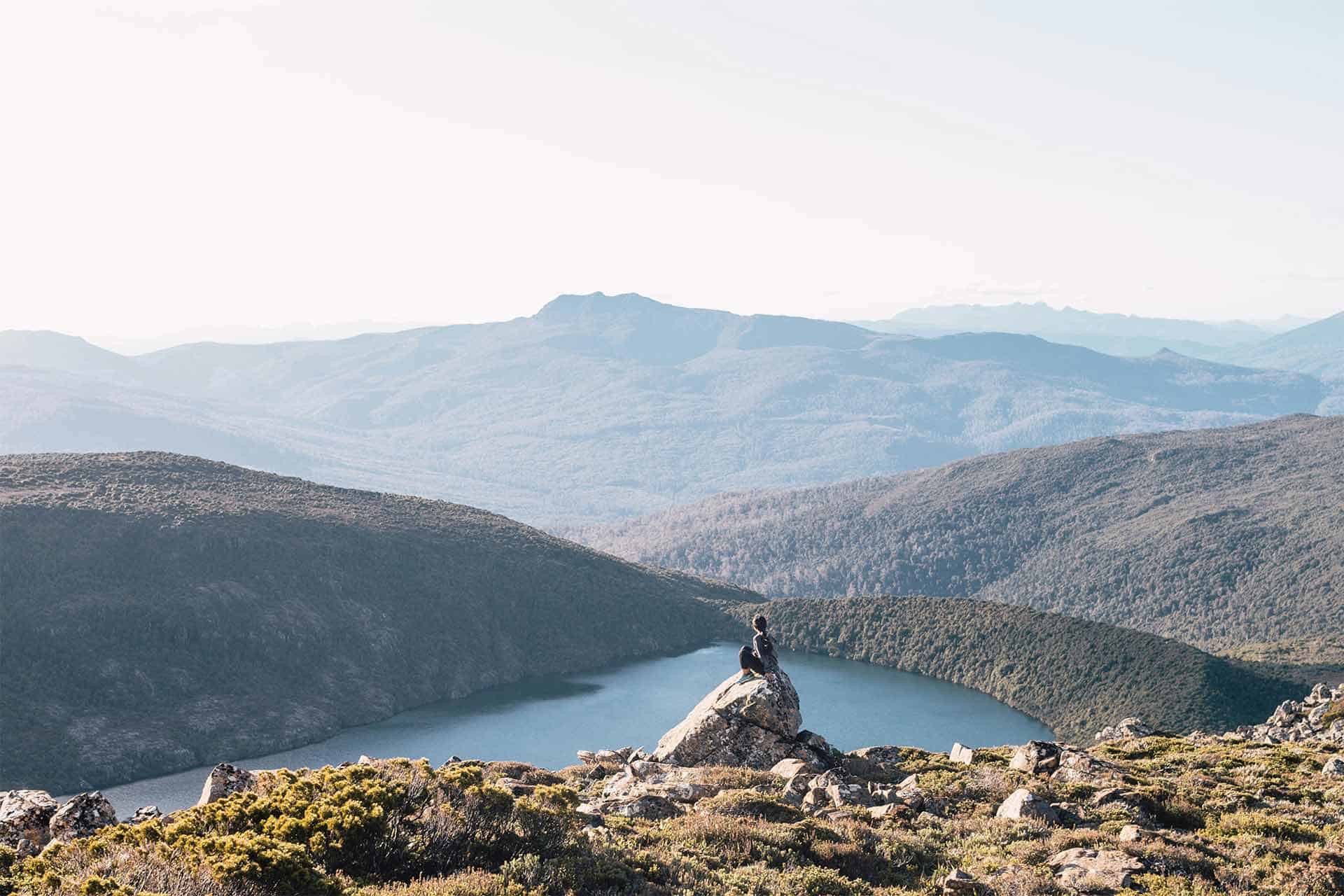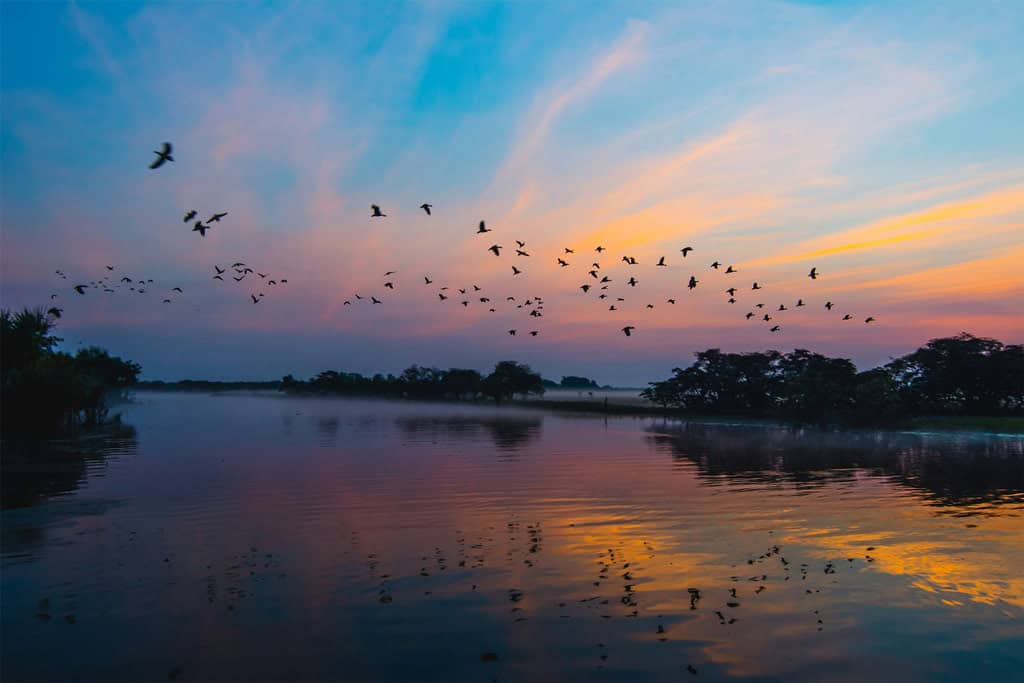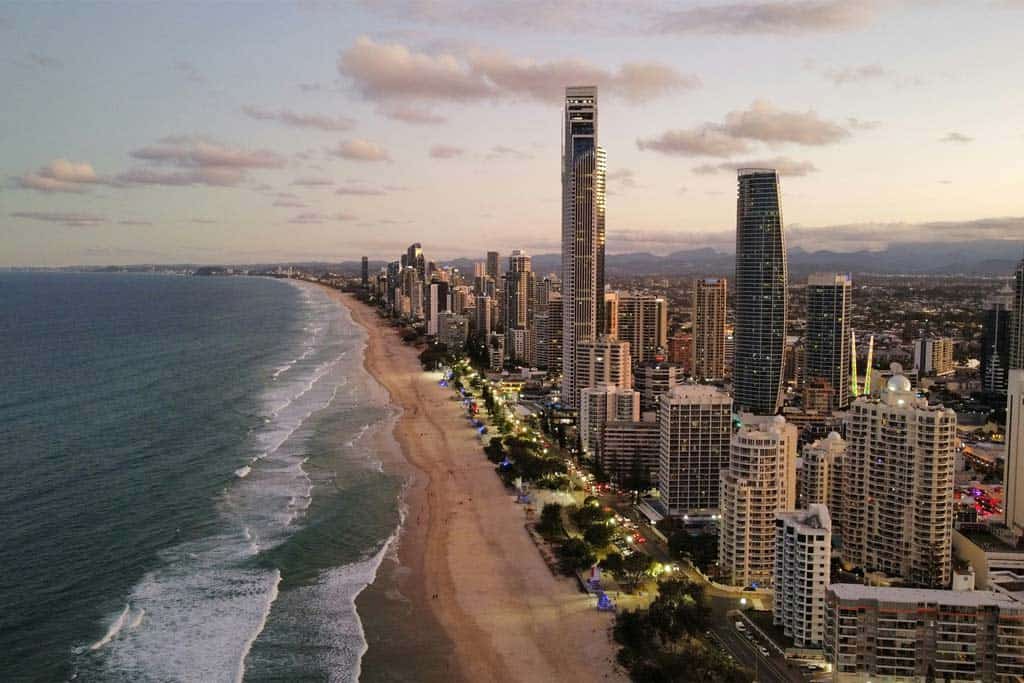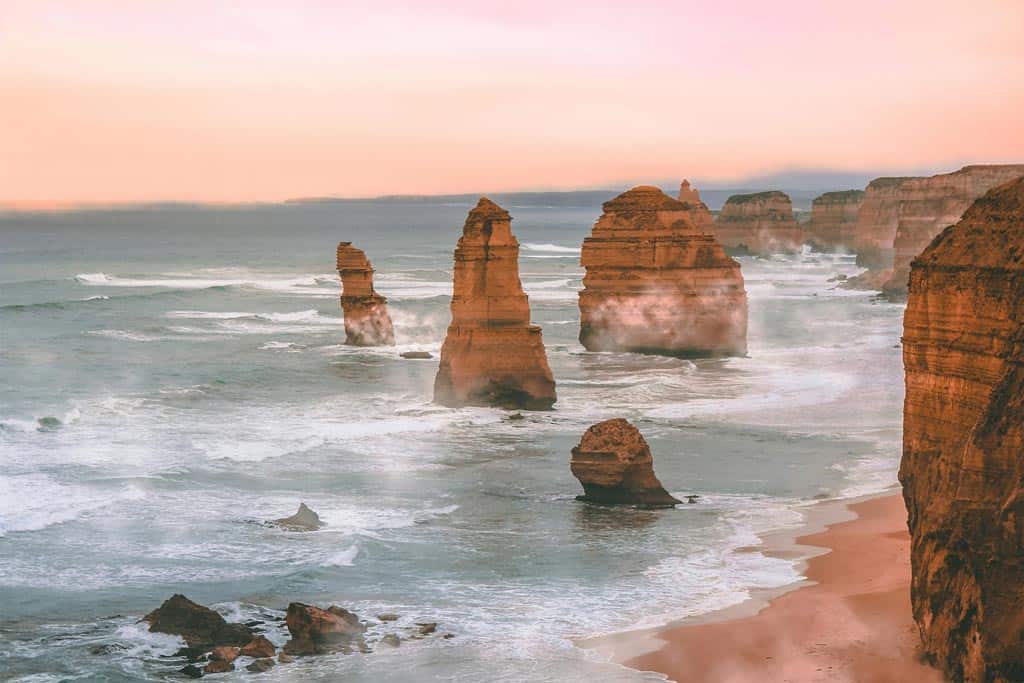
Check out our ultimate Australia packing list, including all the essentials you might need for your adventures Down Under!
It can be difficult to pack for Australia when there is such a huge range of adventures to be had in this gorgeous country.
Maybe you’re venturing up to the tropics to dive the Great Barrier Reef, heading south to Tasmania for hiking and backpacking, or flying into Alice Springs for a rugged Outback expedition.
Maybe you’re planning to road trip along the secluded landscapes of Western Australia, or beach-hop along the Gold Coast in search of the best waves. Or maybe you’re city-hopping to iconic places like Sydney, Melbourne, Brisbane, or Perth.
There is so much to see and do in Australia, and your packing list will vary depending on your plans.
We’re going to provide an overview of a basic Australia packing list, with important tips to consider and packing recommendations for different parts of the country.

Packing for Travel to Australia
Here is our ultimate Australia packing list! Note that this is just a guideline, and every Australia trip is unique. You will know just what you need to have a successful trip abroad, so be sure to modify this list to suit your own travel style and trip length.
Don’t forget to browse our ultimate Australia travel guide for the most important info!
General Australia Packing Tips
Before we dive into the specific items to pack for Australia, here are some general packing tips to keep in mind.
From insurance and visas to conquering your jet lag, these tips will hopefully help you transition smoothly into your Australia trip!
Get Travel Insurance
You should get travel insurance for every trip abroad!
Whether your travel is cancelled or delayed, your luggage is lost, or you have a medical emergency abroad, travel insurance can save you so much money on any unfortunate accidents.
Australia is a safe country with excellent medical services and travel companies, so the chances of something going wrong are slim. But it’s still a good idea to be prepared and get travel insurance for your trip.
Important Note! Before you book any international trip, we honestly recommend getting travel insurance. You never know when things will go wrong, and medical bills can add up quickly if you get sick or injure yourself overseas.
Our personal recommendation based on our own experience is World Nomads.
Consider how much you’re moving around
Before you plan your packing list, consider how much you’re moving around in Australia.
If you’re hopping from place to place, you’ll want to pack as light as possible. Lugging around tons of suitcases can be annoying on an action-packed adventure.
But if you’re just heading to one spot and staying there for a while, you’ll be fine with a bigger bag and therefore more stuff!
Note that packing light also can help you save money. Consider trying to pack just a carry-on to save yourself time and money at the airport.
READ MORE: Check out our recommended travel backpacks!
Australia has many modern stores and amenities
If you do forget to pack something for your trip to Australia, you’ll most likely be able to buy it when you arrive.
Australia is a pretty modernized country, and most major cities have an abundance of stores where you can buy any clothing, toiletries, or medications you might need.
If you’re spending a while here, it might even be worth buying some toiletries like shampoo or toothpaste when you arrive to make your bags lighter.

Australia has strict biosecurity rules
Another important thing to note about packing for Australia is the biosecurity rules.
When you arrive in Australia and go through customs, you’ll have to declare any plant or animal products in your bags. This includes most foods, seeds, or even boots that might have come into contact with farm animals.
The immigration rules are quite strict, and hefty fines await anyone who doesn’t declare certain items.
Because of Australia’s unique, isolated, and delicate ecosystem, these rules are designed to limit invasive species and protect the environment.
Check the Australian Border Force website for more information about what you can and can’t bring to Australia.
Pack for the flight as well as the trip
Depending on where you’re flying from, you’ll want to pack for your flight to Australia as well as just your time there. If you’re coming from the Americas, Europe, or Africa, you may need to conquer some long flights to get here.
So ensure your packing clothing list includes a comfortable, breathable outfit for the flight. You’ll also want a warm jacket, as places can get cold with air conditioning.
Bring a good pair headphones, a reusable water bottle, snacks, and moisturizer for the flight. Also consider an eye mask, neck pillow, motion sickness pills, compression socks, or anything else that might make your long flight more comfortable.
Bringing these tools will help you sleep and can possibly lessen your jet lag once you arrive!
Check out our list of the best travel essentials to consider for your next trip.
Ultimate Australia Packing List Items
Now let’s get into the nitty-gritty of what to pack for Australia!
Here is a list of travel essentials, clothing recommendations, and other ideas for what you might need during your trip.
Again, these will vary from person to person, especially the clothes and everyday wear. But use this list as a guideline for your own Australia packing list.
Clothing and Footwear
| Clothing and Footwear |
| • Comfortable everyday clothes (thin layers are ideal for most places) • Warmer clothes and a warm jacket (for winter, cooler nights, or colder climates) • One or two outfits of dressier clothes for nights out • Pajamas • Swimwear • Rain jacket or windproof jacket for outdoor adventures • Socks and undergarments • Sandals / Flip flops • Comfortable walking shoes • Hiking shoes if you plan on trekking • Hat and sunglasses (we love and recommend SunGod adventure-proof sunglasses) |
Bags and Accessories
| Bags and Accessories |
| • A sturdy backpack, duffel bag or suitcase to hold everything • Camera bags for photography gear (We love Peak Design for this) • Smaller day bag to take on day trips • Reusable water bottle • Toiletry bag and toiletries • Wallet • Camera or GoPro and their chargers • Spare SIM card to store all the images you take • Power bank if you use your phone often and need extra charge • Waterproof backpack cover if you plan to hike or backpack in wet season • A few plastic bags in case bathing suits or towels aren’t dry before a day of transit • Luggage locks or a padlock for a hostel locker • Umbrella • Packing cubes to save space in your backpack and stay organized |
Essential Travel Items
| Essential Travel Items |
| • Passport and a copy of passport • Visa documents • Driving license or international driving license if you plan to drive • Travel towel (most accommodations provide bath towels, but it’s handy to have your own. Rainleaf is an amazing brand for microfibre towels) • First Aid Kit if you plan on traveling in remote areas • Money Belt (get a PacSafe one for the best quality) • Credit or debit cards (Most places in Australia accept card payments. Be sure to notify your bank that you are traveling so they don’t suspect fraud from international charges) • Phone, tablet, laptop, kindle, or any other essential electronics and their chargers • Headphones • Insect repellent • Hand sanitizer • Electricity adaptors so you can charge your devices (Australia has a Type I trio of flat prongs) • Ear plugs • Prescription medicines you may need • Journal, book, or other in flight essentials |
Things to Consider While Packing for Australia
While finalizing your list of what to pack for Australia, there are some important things to consider about the country.
Travel around Australia varies from place to place. There are eight states, each with their own unique landscapes and climates. While visiting Australia, you’ll want to cater your packing list to the destination!
And remember, Australia is in the Southern Hemisphere. So summer is December, January, February, autumn is March, April May, winter is June, July, August, and spring is September, October, November.
Most people start their Australia trip in Sydney. See our Ultimate Guide to Backpacking in Sydney for more tips!

Climate and Weather in Australia
Climates vary all around Australia and you can encounter all four seasons here. So do a bit of research about the area you are visiting. Not only that, but each area has its own weather patterns for different seasons as well.
For example, the tropical north of Queensland, Western Australia, and the Northern Territory are hot and humid. Even in winter, these destinations can be warm and sunny all day long. You wouldn’t need to pack a thick jacket for these places, but you might want extra insect repellent and summer clothes.
If you’re heading into the desert Outback, the weather can be hot in the day and freezing cold at night, so you would need clothes for all the elements.
If you’re traveling south to places like Melbourne, Tasmania, or Adelaide, you’ll find colder temperatures. Even in summer you probably will want a jacket for the nights and mornings.
Other locations are more temperature, such as Sydney, Byron Bay, or Perth. These places may have a scorching sun in summer but a pleasant chill in winter, so we recommend packing for the season in which you’re visiting.
Read next: The 15 BEST Things to Do in Byron Bay
Unique Landscapes
In addition to the climate and weather, consider the landscape of your destinations while visiting Australia.
The East Coast is full of stunning beaches, from Bondi Beach to Surfer’s Paradise and more. If you’re just cruising along the coast, prioritize your flip flops, travel towel, and quality swimwear to prepare for all those beach days!
If you’re heading into the Outback, the landscape is much more rugged. Avoid nice, white clothing as everything will be covered with red dust by the end of your adventures through Uluru or Kings Canyon.
Some Australia trips may be full of outdoor adventures in the tropical rainforests around Cairns or the Northern Territory. Pack versatile, comfortable clothes that will suit all activities!
In these tropical areas, prioritise sun protection when spending time outside, even in the winter months.
Consider the Purpose of the Trip
When considering what to pack for Australia, the purpose of your trip is important to think about. Pack for the activities you’ll be doing, and don’t bother packing stuff you likely won’t use. Thinking about this ahead of time helps you avoid overpacking, allowing you to streamline your packing process.
Going to spend most of your trip snorkeling or diving on the Great Barrier Reef? Just pack lots of bathing suits and summer clothes! Most tours will provide all your snorkel and dive gear, so you really don’t need to pack much.
Spending most of your time in the big cities? You may want to pack dressier clothes for fancy nights out on the town.
Planning lots of epic outdoor activities like trekking, camping, backpacking, rock climbing, or mountain biking? Make sure you have good hiking shoes, athletic wear, long pants, water shoes, or layers to protect against the elements.
In that case, we recommend heading to your local Kathmandu store to pick up the best trekking and camping gear.
So you don’t need to pack hiking boots if you’ll just be hopping around the city, and you don’t need to pack fancy clothes if you’ll just be exploring outdoors.
Consider the purpose of your trip and pack accordingly! This sounds self-explanatory, but it really helps to plan your trip in advance and pack logically.
The Best Time to Travel to Australia
When considering what to pack for Australia, you may also be wondering when is the best time to visit.
Again, the best time to visit varies depending on which part of this massive country you’re heading to. But we’ll provide a quick summary so you can understand the different seasons.
Also note that the weather and climate mainly just affect which clothes you’ll pack for Australia. The basic travel essentials generally stay the same no matter where or when you’re heading Down Under.
There is no bad time to visit Australia, so these are the top travel tips and destinations based on season!

Summer (December – February)
Summer is generally peak season in Australia, so note that flight prices, tours, and accommodations may be more expensive or sell out quickly. Book your summer travel to Australia far in advance! The Aussie sun is also extra strong in summer, so remember to prioritise sun protection.
Best for: Beach hopping, outdoor activities and sports, coastal exploration
Where to visit: Great for southern cities like Sydney, Melbourne, and Adelaide. Tasmania also shines during summer with its cooler climate and scenic landscapes.
Where not to visit: Northern regions (like Darwin, Cairns, and the Great Barrier Reef) as they experience tropical monsoon season and stinger season with high humidity, heavy rains, and cyclones.
Autumn (March – May)
Autumn is one of the best times to travel anywhere in Australia. Temperatures average at comfortable ranges in most of the country, and the heat and humidity of summer starts to dissipate.
Best for: City exploration, wine tours, and temperate climates
Where to visit: Autumn is pleasant in most of the country. Wine regions like Barossa Valley, Hunter Valley, and Margaret River are stunning, as are the warmer cities like Brisbane, Noosa, or Gold Coast. It’s also an ideal time to explore Sydney, Melbourne, and other southern cities.
Winter (June – August)
Winter is actually great in Australia, as it’s off season for most places. Flight prices tend to be really cheap and you usually won’t have many crowds. Warm clothes are a must-have if you’re anywhere south or near the coast!
Best for: Winter sports, whale watching, exploring the Outback and northern Australia
Where to visit: Head to the Northern Territory (Darwin, Kakadu) or Queensland (Cairns, Great Barrier Reef), as these areas have dry, sunny, and warm conditions. Western Australia is also gorgeous in winter, particularly Broome and Exmouth in the north. Or go whale watching anywhere along the East Coast!
Where not to visit: Southern regions can get chilly and rainy, especially Tasmania and Victoria.
Read next: The Most EPIC Perth to Broome Road Trip Itinerary
Spring (September – November)
Spring is also one of the best times to visit Australia. There is really nowhere that you can’t go at this time!
Best for: Wildlife watching, outdoor adventures, and festivals.
Where to visit: This is a fantastic time for the entire country. Visit national parks for wildflower season in Western Australia and New South Wales. It’s also a great time for the Great Barrier Reef and island-hopping in Queensland.

DISCLAIMER: Some of the links in this article are affiliate links, which means if you book accommodation, tours or buy a product, we will receive a small commission at no extra cost to you. These commissions help us keep creating more free travel content to help people plan their holidays and adventures. We only recommend the best accommodations, tours and products that ourselves or our fantastic editorial team have personally experienced, and regularly review these. Thanks for your support, kind friend!
Discover more from reviewer4you.com
Subscribe to get the latest posts to your email.





